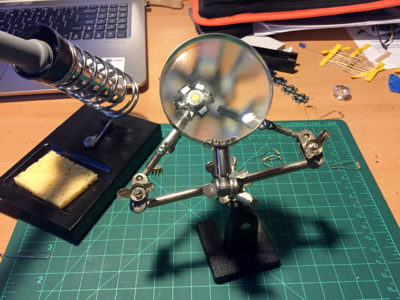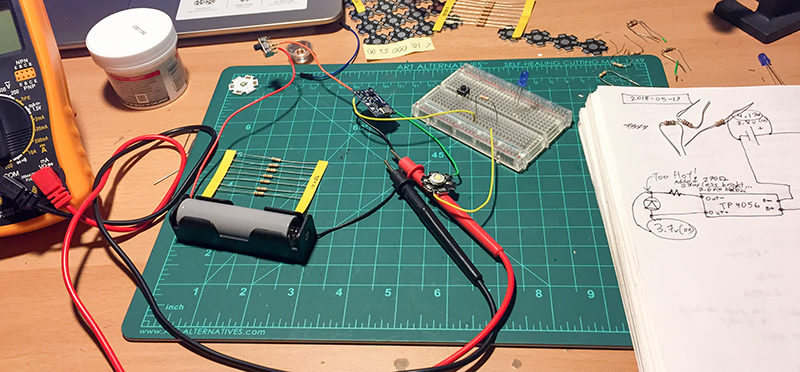 My flashlight project has advanced after weeks of painstaking component procurement. I finally had everything I needed to solder together a trial circuit. Soldering is not quite like riding a bike. I have to re-teach myself every 3 years or so (when I get bit by the electronics-bug.) After a quick YouTube crash-course, I was finally able to use some "helping hands" I've had stashed away. Starting with the heat sink and the light bulb, and continuing one component at a time until I had the basic circuit.
My flashlight project has advanced after weeks of painstaking component procurement. I finally had everything I needed to solder together a trial circuit. Soldering is not quite like riding a bike. I have to re-teach myself every 3 years or so (when I get bit by the electronics-bug.) After a quick YouTube crash-course, I was finally able to use some "helping hands" I've had stashed away. Starting with the heat sink and the light bulb, and continuing one component at a time until I had the basic circuit.
I'm pretty reliant on the charging module at the center. All my research of li-ion batteries led to the conclusion that I would want to use an off-the-shelf component to regulate power cycles through the cell and provide over/undercharge protection. Once I've got everything finalized, I'll have to whip up a circuit diagram. I soldered the circuit together before testing anything, and was delighted when it actually worked... so basically I'm Tony Stark now.


Before getting too far ahead of myself, I let it run for a while to see if anything would burn out. Sure enough, after maybe 3 min of run time, the bulb/heat sink had become very hot. Clearly there was too much...something. current? voltage? one of those? both? Regardless, the electricity needed to be dialed back with a resistor. I split one wire and plugged it into the breadboard to easily switch out options. Unfortunately the lowest resistance I have in my kit is 270 ohms, which makes the bulb too dim, so we're back to ordering components... Meanwhile, I should test out the charging module.
